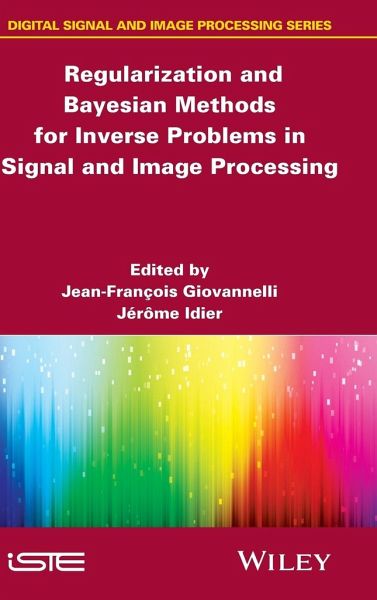
Regularization and Bayesian Methods for Inverse Problems in Signal and Image Processing
Versandkostenfrei!
Versandfertig in über 4 Wochen
157,99 €
inkl. MwSt.
Weitere Ausgaben:

PAYBACK Punkte
79 °P sammeln!
The focus of this book is on "ill-posed inverseproblems". These problems cannot be solved only on the basisof observed data. The building of solutions involves therecognition of other pieces of a priori information. Thesesolutions are then specific to the pieces of information taken intoaccount. Clarifying and taking these pieces of information intoaccount is necessary for grasping the domain of validity and thefield of application for the solutions built. For too long,the interest in these problems has remained very limited in thesignal-image community. However, the community has since recogn...
The focus of this book is on "ill-posed inverseproblems". These problems cannot be solved only on the basisof observed data. The building of solutions involves therecognition of other pieces of a priori information. Thesesolutions are then specific to the pieces of information taken intoaccount. Clarifying and taking these pieces of information intoaccount is necessary for grasping the domain of validity and thefield of application for the solutions built. For too long,the interest in these problems has remained very limited in thesignal-image community. However, the community has since recognizedthat these matters are more interesting and they have become thesubject of much greater enthusiasm.
From the application field's point of view, a significantpart of the book is devoted to conventional subjects in the fieldof inversion: biological and medical imaging, astronomy,non-destructive evaluation, processing of video sequences, targettracking, sensor networks and digital communications.
The variety of chapters is also clear, when we examine theacquisition modalities at stake: conventional modalities, such astomography and NMR, visible or infrared optical imaging, or morerecent modalities such as atomic force imaging and polarized lightimaging.
From the application field's point of view, a significantpart of the book is devoted to conventional subjects in the fieldof inversion: biological and medical imaging, astronomy,non-destructive evaluation, processing of video sequences, targettracking, sensor networks and digital communications.
The variety of chapters is also clear, when we examine theacquisition modalities at stake: conventional modalities, such astomography and NMR, visible or infrared optical imaging, or morerecent modalities such as atomic force imaging and polarized lightimaging.




